Inside the unique traffic jam of moving exhibits at L.A.’s Petersen Automotive Museum
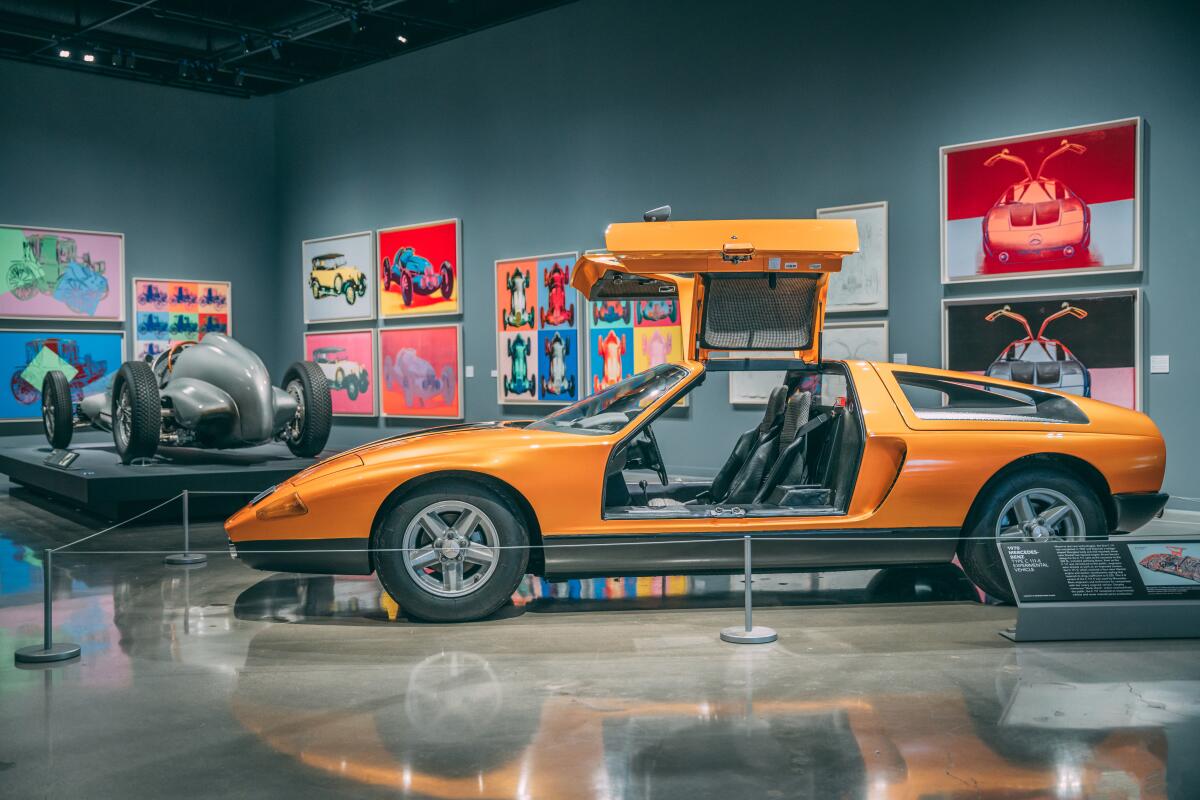
- Share via
Jennifer Yates is directing traffic today — a routine happening as part of her job as head registrar at the Petersen Automotive Museum.
This late January afternoon, however, traffic is especially gnarly — and not because it’s a Friday. Several valuable vehicles are arriving at — or leaving — the museum today, a coincidental calendar smashup that has Yates ping-ponging between projects.
First, there were the Hetfield Collection cars, donated to the museum in 2019 by Metallica’s James Hetfield, Yates says while striding up and down South Orange Grove Avenue, a side street onto which the museum’s car elevator deposits vehicles from the mechanics shop below. Those 10 customized cars had been on view at LeMay — America’s Car Museum in Tacoma, Wash., and just returned home. Two of the tractor trailer trucks that transported them are still sitting on Orange Grove next to the museum’s parking garage exit, their back ends open and motors humming. Earlier that morning, two McLaren luxury “supercars,” which had been on loan to the museum, were returned to their owner.
The day’s main event, however, is the sendoff of two rare vehicles heading on an international road trip — a 1937 Mercedes-Benz W 125 Grand Prix car, sleek and silver, along with a dark gold luxury prototype, a 1970 Mercedes-Benz Type C 111-ll experimental sports car. Both were on view at the Petersen’s recently closed exhibition “Andy Warhol: Cars — Works From the Mercedes-Benz Art Collection.” As part of a commission from Mercedes in the mid-1980s, Warhol created 36 silkscreens and 13 drawings of eight Mercedes models. Most of those artworks and five of the cars that inspired them — four originals and a replica — were on view in the Petersen exhibition.
“It’s an all-hands-on-deck kind of thing,” Yates says of exhibit deinstallation, which includes the return of the cars to their owners. “There are a lot of moving parts.”
The other Warhol cars are in storage, awaiting transfer back to U.S. lenders, and the Petersen owns one of the cars. The two Mercedes, however, are the only ones traveling internationally, They’ll brave Los Angeles’ rush-hour traffic en route to L.A. International Airport before boarding a flight to Luxembourg. Their ultimate destination? The Mercedes-Benz Museum in Stuttgart, Germany.
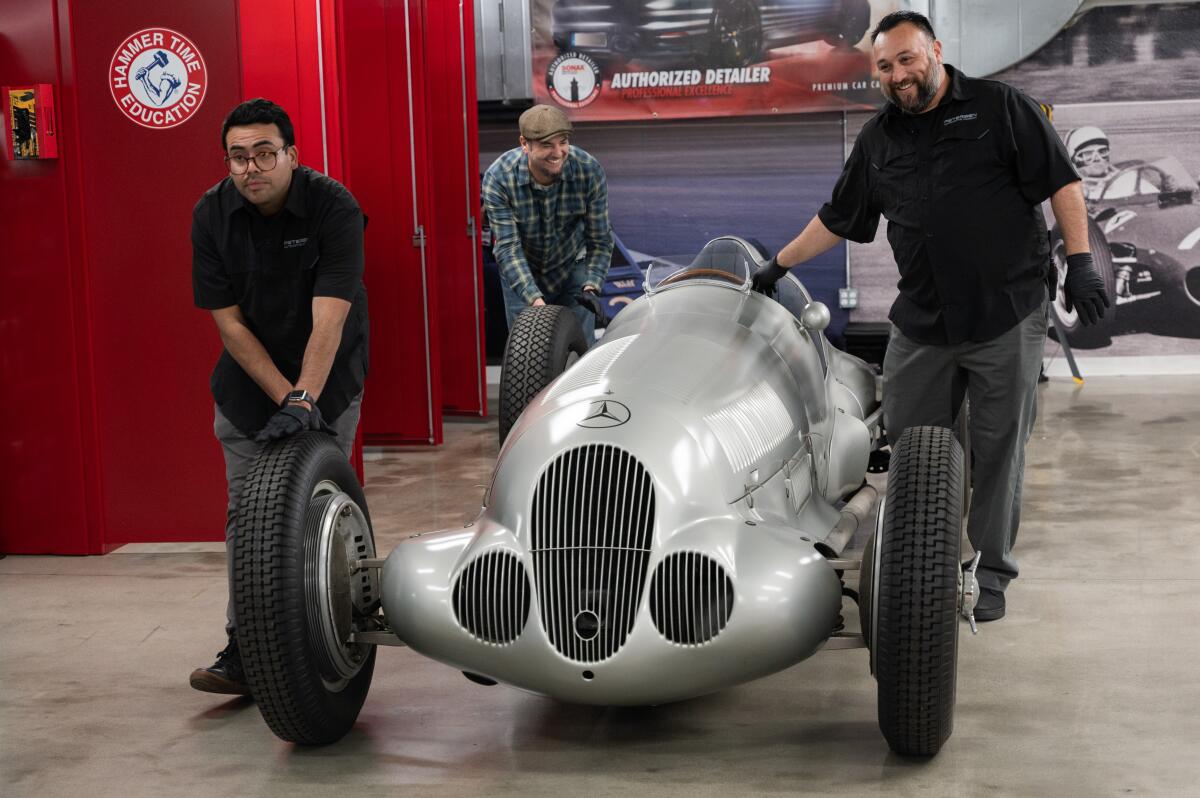
Down in the mechanics shop — a vast area with gleaming, polished concrete floors, automotive tools tucked in shiny, red metal cabinets and rows of classic cars in a spectrum of colors dating to 1910 — Yates does a pretrip inspection.
The elongated W 125 race car sits discreetly against a back wall, near a 1948 Jaguar “Black Pearl,” which is near a 1937 Ford custom “Crimson Ghost” coupe, which is near a 1954 Mercedes W 196 Formula 1 Grand Prix car — the latter also displayed in the Warhol exhibit and one of the most valuable cars in the world. Yates circles the race car that’s soon headed for Germany, scrutinizing its condition and snapping detail shots with her red, rubber-encased iPad. This is for an inspection condition report, she explains, to record even the tiniest scuffs, scratches or any other flaws, a process undertaken when the cars arrive and when they leave the museum. Hundreds of pictures will be taken.
The process is not unlike a rental car agent inspecting a vehicle upon return, but the stakes here are higher. Yates isn’t allowed to divulge insurance values, she says, except to say: “One of the cars is in the seven figures, the other the eight figures.”
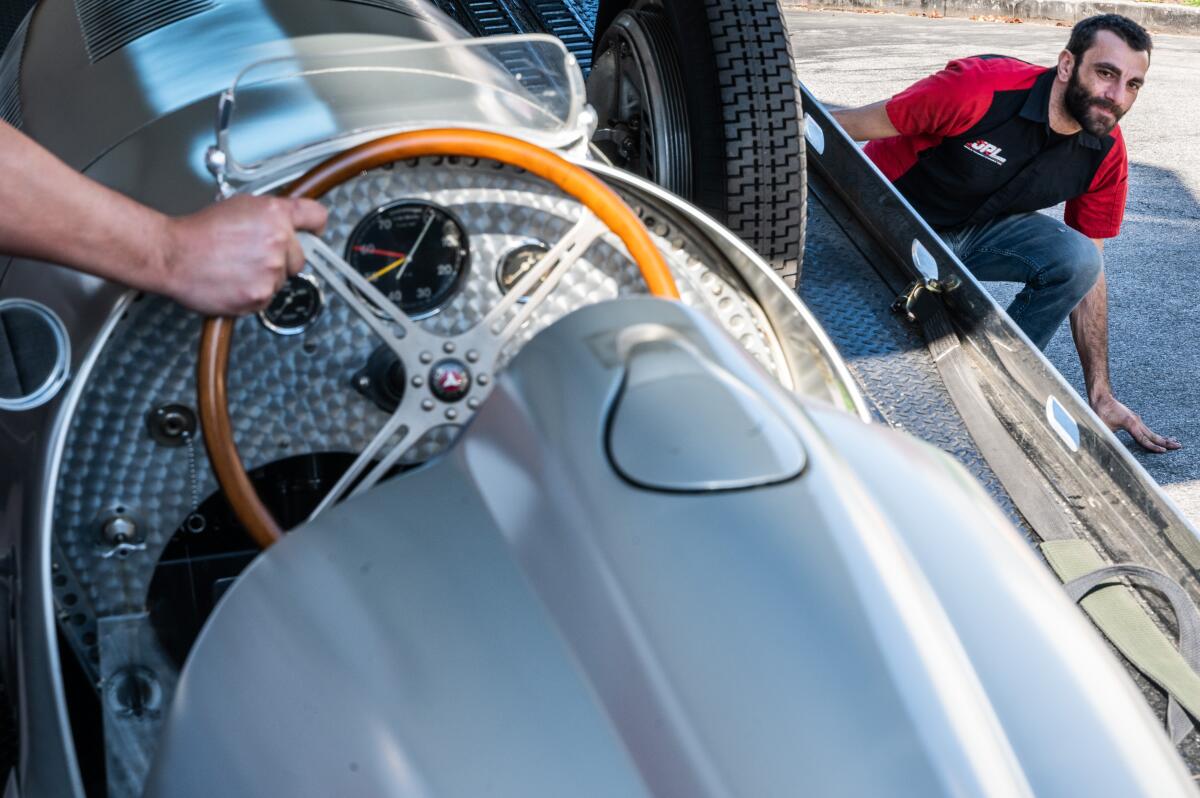
The open-wheel W 125 Grand Prix car has a mahogany steering wheel and plush gray interior and is entirely open-air, with no roof. Its lightweight aluminum, tube-like design was effective: The car raced only one season — 1937 — but won six races and finished second nine times and third six times.
The Type C 111-ll was an experimental prototype model that never went into production. It was built to test new technologies and likely driven for promotional purposes at auto shows. With its leather steering wheel, sleek, low-slung design and black check interior, it says nothing if not James Bond.
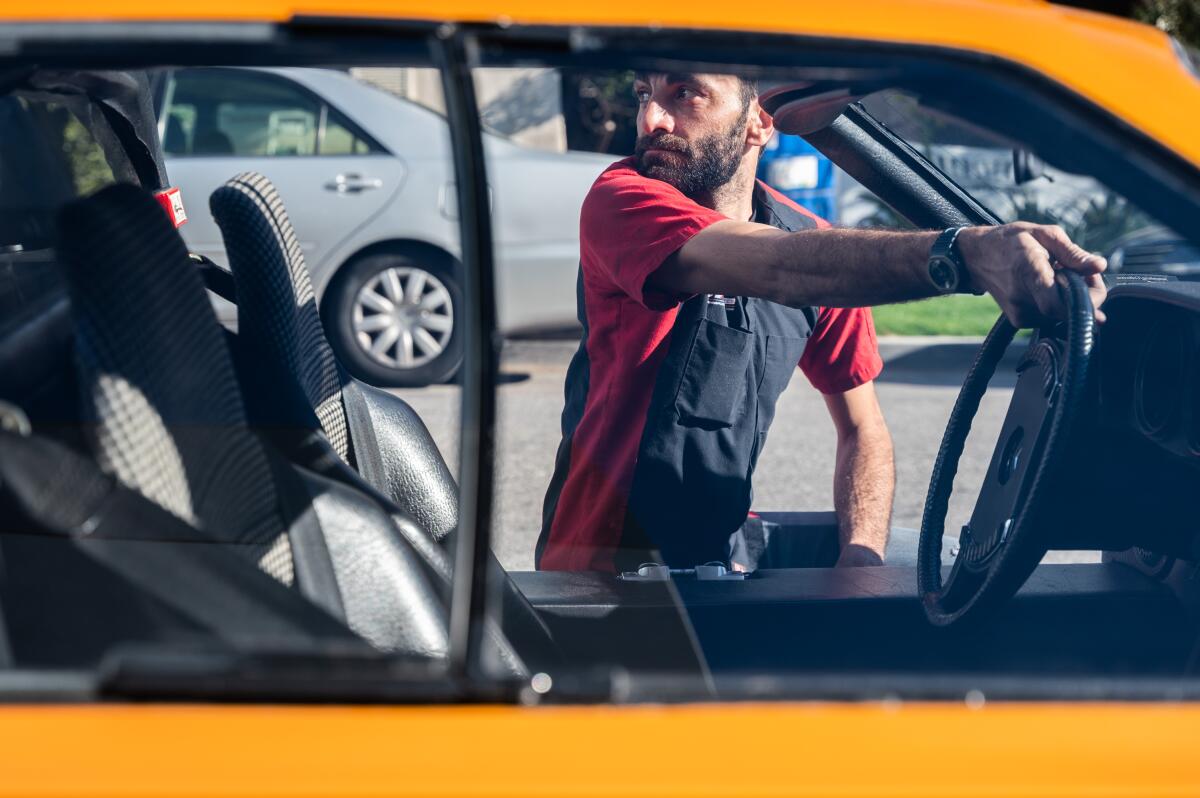
Suddenly, there is movement in the mechanics shop. A car porter and a technician begin manually pushing the Type C 111-ll. which has gull-wing doors that open upward, into the vast elevator.
“We try not to turn the cars on, especially if we don’t own them,” Yates says. “We don’t want to be liable for any mechanical issues. It’s safer to push it.”
Yates follows the vehicle into the elevator, still snapping photos. An employee from the transport company also takes photos — coincidentally, also with a red rubber-encased iPad. The theme of the day seems to be CYA (Google it): “I’m documenting that it’s not being mishandled,” Yates says, later adding that the museum’s insurance covers the cars “door to door.”
The porters are trained to place their hands as they push the car in only particular spots — such as on the wheels or bumper — where it’s more structurally sound and won’t suffer damage from tension.

The car slowly rolls off the elevator onto the street, where it will be loaded onto a car transporter (a.k.a. an enclosed truck). A crowd of about 30 high school students from Phoenix who are exiting the museum, with oohs and aahs, snap pictures with their phones.
“Whoa!” one student yells out.
“We didn’t see this in there!” another chimes in.
Visitors unexpectedly catching a glimpse of a historic car in transport — on the real streets of Los Angeles as opposed to in a gallery — is a regular, serendipitous happening at the Petersen, says Dana Williamson, the museum’s conservator.. The students’ excitement reaches fever pitch, but Williamson’s eyes are fixed on the gold car as it ever-so-slowly is positioned parallel to the sidewalk.
“It’s a different exposure that people get to see,” Williamson says of the tourists. “We treat the museum as a center for education about car culture and design. So they get to see another aspect they wouldn’t otherwise experience.”
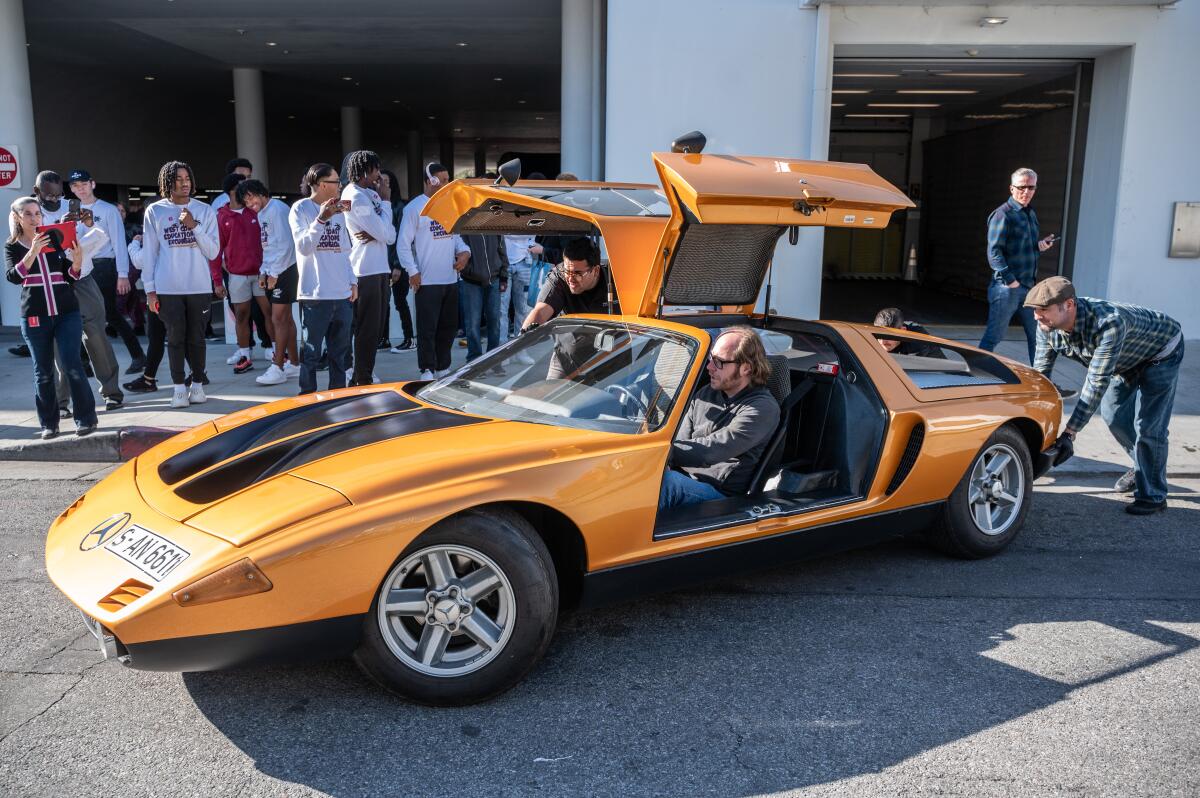
As if the scene wasn’t chaotic enough, there’s now a trash recycling truck on Orange Grove waiting to pass through onto Wilshire Boulevard. But the sports car, its many handlers and the audience of tourists fill the street for now. Behind the truck is another car waiting to pass through.
This sort of thing “happens a lot,” Yates says.
“Because this is a public street, we often have pedestrians and public cars coming down here, so I have to be traffic cop,” she says. “We’ve had near-misses. You just have to make sure that people stop and see you.”
Suddenly, a smaller vehicle — a 1960s Meyers Manx original dune buggy — zips through the sliver of open road and stops in front of the Warhol car. Its driver is Meyers Manx Chairman Phillip Sarofim, who’s also a board member of the Petersen. He’s out for a spin and chats, from behind the wheel, with museum staffers while surveying the gold Mercedes, beaming. Between his 1960s car, the 1970s Mercedes sports car, the contemporary-looking SUVs and Hondas parked along Orange Grove — not to mention the still-stuck recycling truck — the scene is a kaleidoscopic mishmash of vehicles throughout the decades. If Warhol were here today, Yates imagines, he might be inspired to make a film documenting the commercialism-meets-art-meets-real-life-traffic-snaggle.
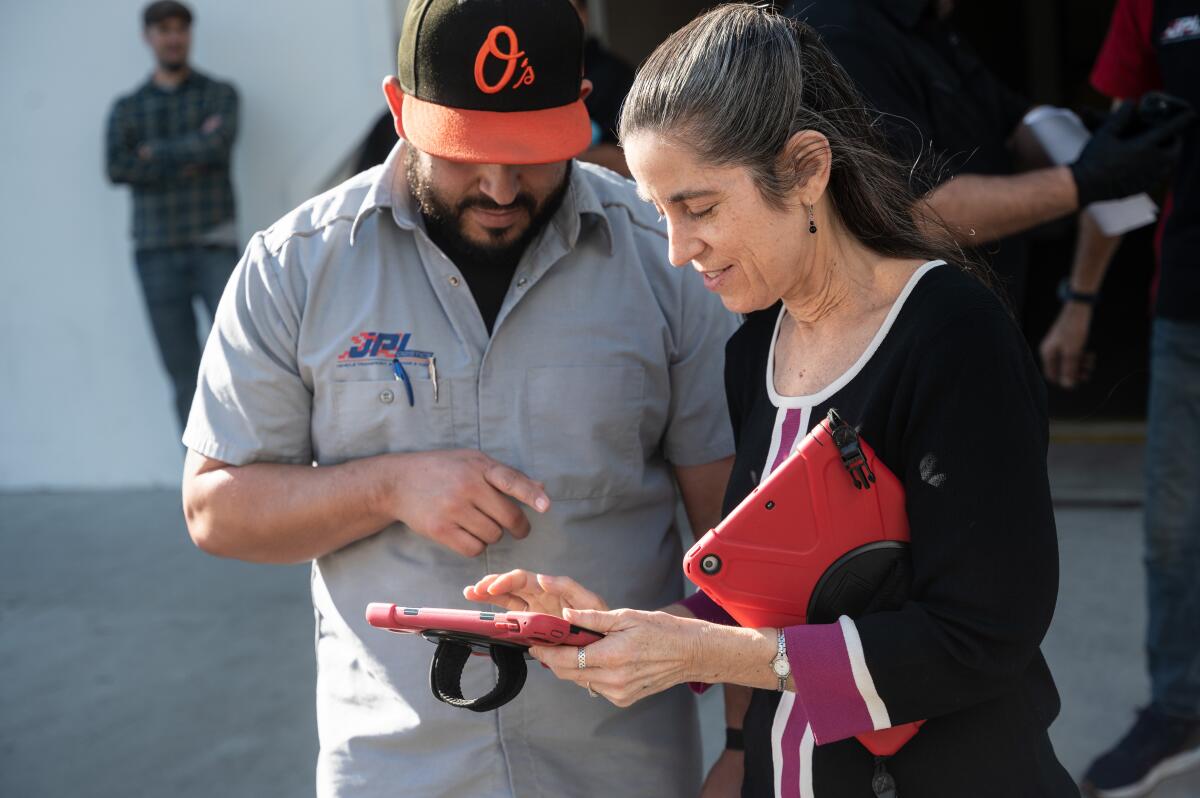
Yates chuckles at the ridiculousness, though the day’s frenetic activity is not novel. She worked at the Los Angeles County Museum of Art for more than 20 years in different registrar jobs prior to the Petersen and spent nearly a year working in Frank Gehry’s studio cataloging his architectural models. She appears unfazed by the chaos, hugging her iPad to her chest, hair pulled back neatly and eyes scanning the side street.
Soon both cars are loaded onto the trucks, where their wheels are secured to the truck beds with ratchet straps to prevent movement. Considering that laptops are generally packed in protective sleeves for transport, and musical instruments carried in padded cases, the straps, by comparison, seem fairly rudimentary for moving such a large, vintage object. But it’s the industry standard, says Uwe Moser, who works for air freight transportation company Senator International. He’ll follow the trucks to the airport and see the cars off.
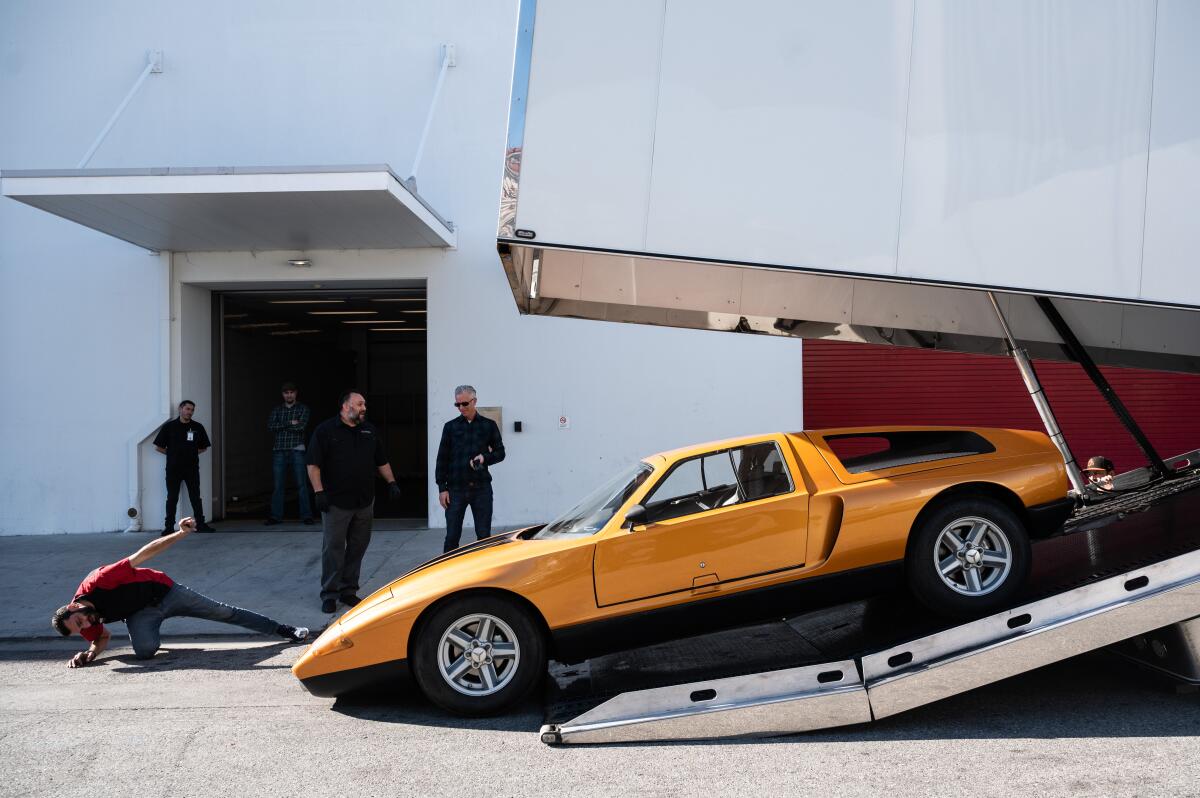
At LAX, the cars will be mounted onto aluminum air freight pallets, which will be secured to the base of a commercial cargo carrier. Each car’s airfare is roughly the equivalent of two first-class tickets for humans, Moser says. They’ll fly into Luxembourg Airport before being transferred roughly 200 miles by truck to the museum in Stuttgart.
But first, the cars must navigate LAX — which is slightly easier for automobiles than humans, as it turns out. No long-term parking, no shuttles, no driving endlessly in circles; the cars will head straight for the airport’s cargo terminal, where they will be prepped for their journey in a warehouse. Paperless customs forms will have been handled in advance and the cars will bypass a security line (it was conducted electronically), going straight from the warehouse onto the aircraft via a high-lift loader, not unlike a forklift.
Turbulence? No worries. The pallets are locked in place on the plane, which is kept slightly colder than a passenger plane: 60 to 65 degrees. That’s not to protect the cargo — it’s to save fuel. The process of heating and cooling, over an 11-hour flight (no snacks), increases fuel consumption, Moser says.

So what could go wrong?
Flight delays, paperwork hiccups and customs delays can occur, Moser says. But in his more than 15 years in the business, he’s observed that damage is usually due to human error.
“A forklift operator backs into a vehicle, stuff like that,” Moser says. “The most common damages are minor — chips or dents — like someone doesn’t wear the proper warehouse clothing or take off his rings or watch.”
Yates takes it all in stride. She loves her job, she says, just not driving.
“I walk to work,” she says.
And with that, the second of two trucks rumbles off, its contents — the race car — hidden from public view and headed on its next adventure.
More to Read
The biggest entertainment stories
Get our big stories about Hollywood, film, television, music, arts, culture and more right in your inbox as soon as they publish.
You may occasionally receive promotional content from the Los Angeles Times.











